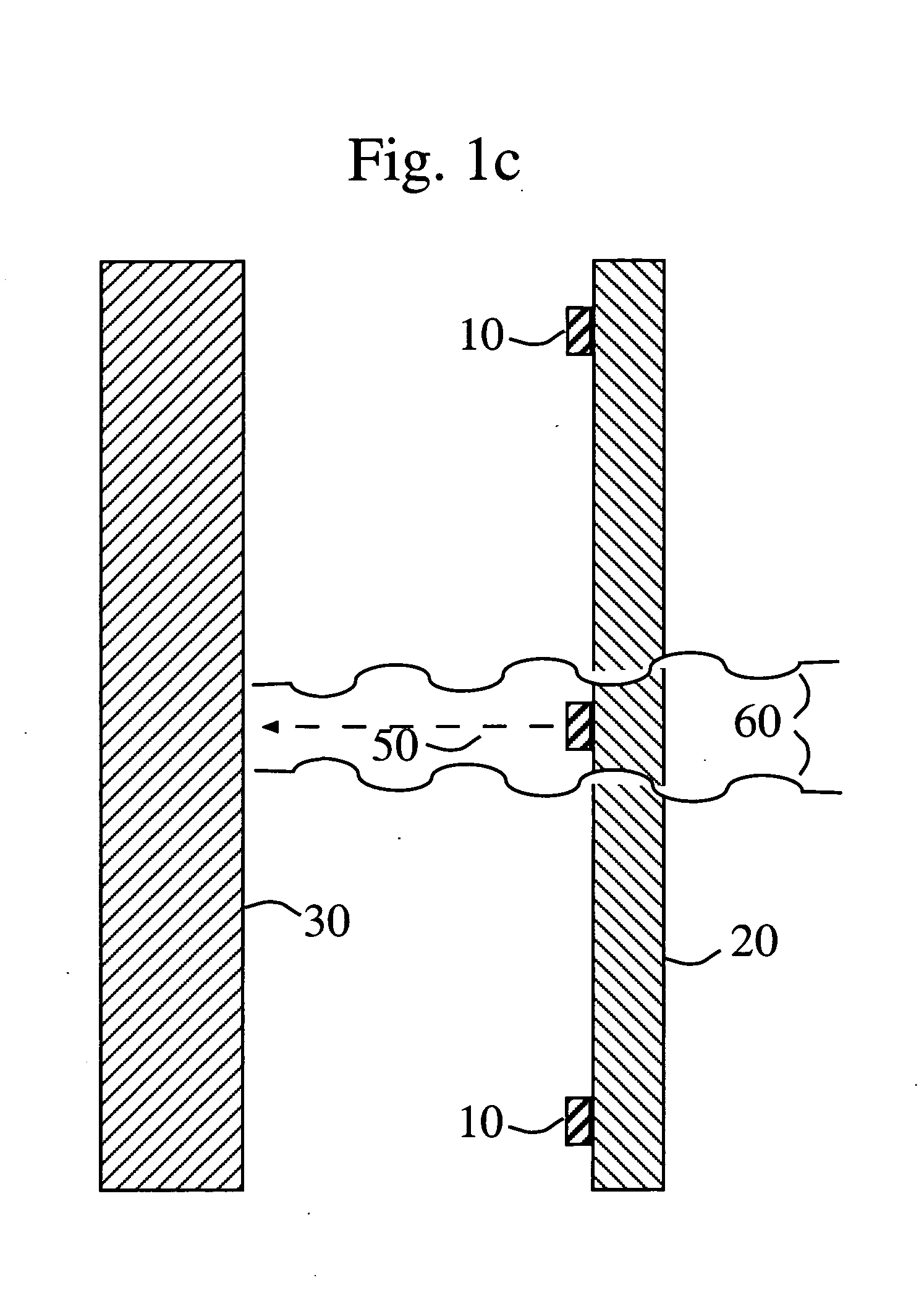Compact radiation source
a radiation source and compact technology, applied in the field of compact radiation sources, can solve the problems of common low power efficiency of x-ray tubes, large heat generation of x-rays by electron beam striking the target, and common limitations of cathode x-ray tubes, and achieve the effect of efficient source of x-ray flux generation
- Summary
- Abstract
- Description
- Claims
- Application Information
AI Technical Summary
Benefits of technology
Problems solved by technology
Method used
Image
Examples
Embodiment Construction
[0046] Although the following detailed description delineates specific attributes of the invention and describes specific designs and fabrication procedures, those skilled in the arts of microfabrication or radiation source production will realize that many variations and alterations in the fabrication details and the basic structures are possible without departing from the generality of the processes and structures. The most general attributes of the invention relate to the cathode or cathode array formed on the exit window of the radiation source. Metal X-ray targets and ultraviolet phosphors can be placed at a number of locations in the source so as to provide emission of either flux individually or both simultaneously and at various operating voltages. Any cathodoluminescent or powder laser phosphor can be used in the source, which can therefore emit light over a number of spectral regions.
[0047] The general prior art method of producing X-ray flux is shown in FIG. 1a and FIG. ...
PUM
 Login to View More
Login to View More Abstract
Description
Claims
Application Information
 Login to View More
Login to View More - R&D
- Intellectual Property
- Life Sciences
- Materials
- Tech Scout
- Unparalleled Data Quality
- Higher Quality Content
- 60% Fewer Hallucinations
Browse by: Latest US Patents, China's latest patents, Technical Efficacy Thesaurus, Application Domain, Technology Topic, Popular Technical Reports.
© 2025 PatSnap. All rights reserved.Legal|Privacy policy|Modern Slavery Act Transparency Statement|Sitemap|About US| Contact US: help@patsnap.com



